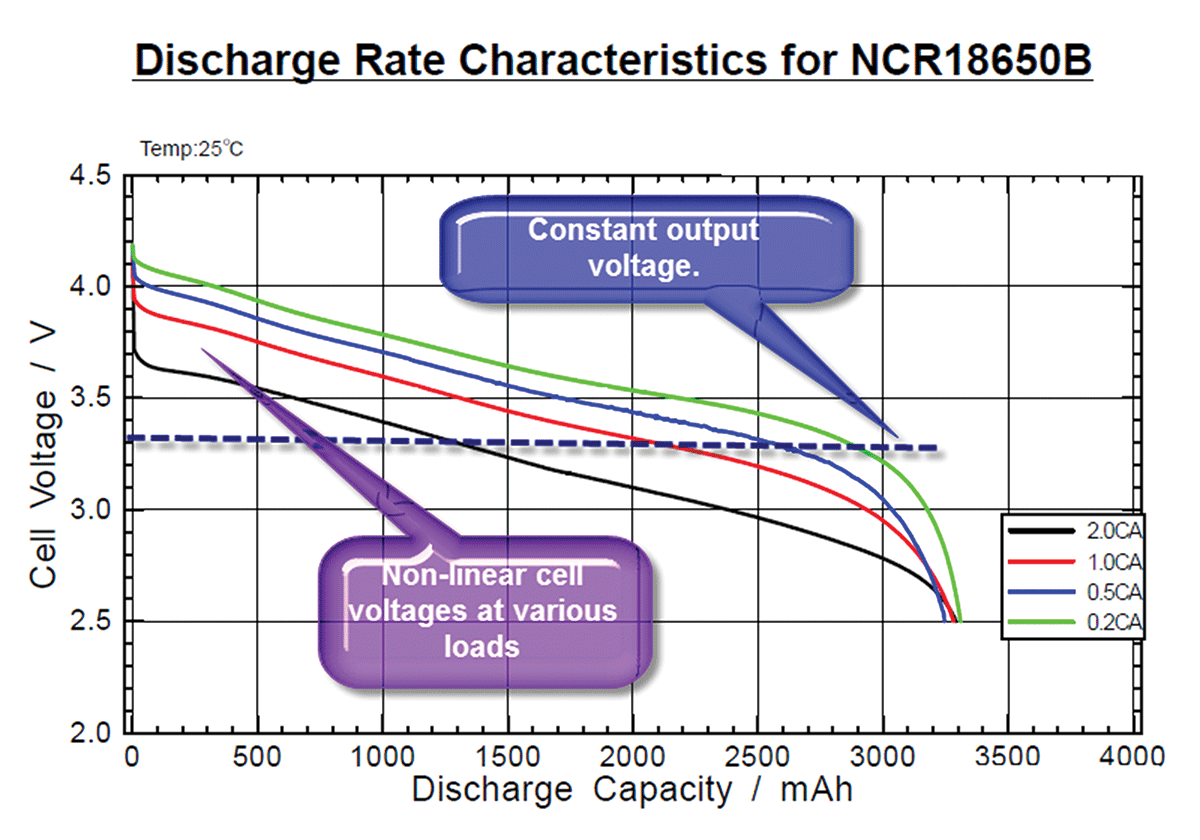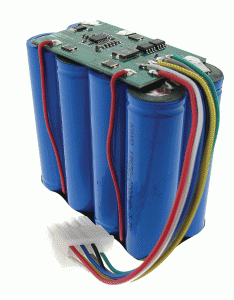Anton Beck, Battery Project Manager
Epec
Batteries have come a long way since their invention, from Volta’s voltic pile of zinc and copper plates to today’s high tech lithium ion batteries. The energy density (both volumetric and gravimetric) of battery cells has steadily increased over the years with new battery chemistries.
However, these increases and the use of volatile materials have made cells less stable and require added electronic safeties. Modern battery cells have electronic safety circuits added to ensure that design parameters are never exceeded. Lithium rechargeable batteries require electronics safety circuits as a minimum, and cell balancing helps keep multiple series cells’ primary safety circuits from activating incorrectly in addition to keeping them in line to improve runtime and cycle life. In addition, batteries used in medical and IT applications are required to have secondary safety circuits present in case the primary circuits fail.
The following added value technologies are part of the reason today’s batteries can be viewed more as power systems/power supplies than as simple batteries.
Embedded Battery Chargers
With embedded battery chargers, unregulated power can be used to charge the internal battery from a number of sources: inexpensive wall bricks, car cigarette adaptors, USB ports and wireless charging pads.
Advantages of embedded charges:
• Increased battery life: the cells are always properly charged under all environmental conditions
• Unauthorized battery chargers are unlikely to damage the battery
• No need for external chargers
•
Perceived simpler solution by end user
Disadvantages of embedded charges:
• Increased initial cost, which may be negated with increased battery life
• Functioning charger circuitry is discarded at the end of battery life
Wireless Battery Chargers
In the past, wireless battery charging relied on each company’s proprietary design. The Inductive Power Standard (QI) lets companies such as Epec embed wireless charging electronics into batteries to work with off-the-shelf wireless charging pads that already exist. Custom charging pads can be designed to cosmetically match a product, though there may be limitations in power depending on the application.
System Output Power
As part of an embedded battery charging solution, a battery can be powered as it is being
charged. Input power can be very limited using a small wall brick, a wireless charger or a USB charger. In these cases, reducing the charge current to the battery when the system is momentarily demanding more power is required so that the input power is not overloaded. This is done by having two current loops, as shown in Figure 1. The red loop defines the total current that can be used by the system and battery pack while the blue loop defines the maximum battery charge current. As the maximum total current defined by the red loop is reached, the charge current to the battery is reduced proportionally to zero if needed. However, care must be taken not to draw more power than is defined in the red loop, since this could still overload the input power supply.

System output power can also be regulated to provide constant voltages higher or lower than the battery voltage. Figure 2 shows the discharge rate of a lithium ion cell under various loads, which can also vary with temperature.

Most lithium-based battery chemistries have fairly flat discharge slopes, and systems can usually handle this variation in battery voltage. However, some chemistries cannot, especially at the end of discharge, when the battery voltage begins to taper off. By regulating system output power, the output voltage can be made constant regardless of the battery voltage.
In Figure 2, the blue dashed line represents a constant output of 3.3 volts, which can be regulated and maintained despite the battery’s varying voltage.
System output voltage can be used in conjunction with the fuel gauge to adjust itself to signal the end of discharge, making batteries backwards compatible with non-intelligent systems. When replacing older batteries with newer lithium ion batteries, old fuel gauges may give false readings, because they are designed specifically for older battery chemistries. This can be overcome by having an on-board lithium ion gauge adjust the output voltage to reflect the old chemistry’s voltage profile. The old battery pack system will then operate as if the old battery were still being used, giving the correct reading. Figure 3 illustrates how dropping the regulated output voltage slightly at the end of discharge to signal low battery condition.

Battery Pack Fuel Gauging
A battery fuel gauge lets the user know how much power is left in the battery.
Battery pack fuel gauging can be accomplished in several ways:
1.) Voltage lookup: the state of charge can be determined by measuring battery voltage and comparing with an internal lookup table.
2.) Coulomb counting: the total amount of energy entering and leaving the battery is measured.
3.) A combination of both voltage lookup and coulomb counting. This gives the advantage of having each method correct the inaccuracies of the other’s reading.
Texas Instruments (TI)’s impedence tracking fuel gauge technology further offers a solution to issues with inaccurate readings due to aging and temperature. Using impedence tracking, the fuel gauge may be programmed to be accurate within 1 percent for the life of the battery.
General Purpose Input/Outputs (GPIO)
 GPIO can be used to control any battery subsystem or control end-product functions using a simple two-wire interface, I2C.
GPIO can be used to control any battery subsystem or control end-product functions using a simple two-wire interface, I2C.
Examples of GPIO applications include:
• Adjusting battery charger current
• Turning LED indicators on and off
• Automated production built in tasks
• Reading internal hardware status indicators
• Activating or switching over multiple battery banks
• Adjusting on-board voltage regulators as needed by the fuel gauge or end product.
• Self-destructing to protect IP (military applications)
Today’s battery packs can offer embedded electronics, which improves the safety, reliability, cycle-life and functionality of the battery while giving the end-product system engineer more options to make the end-product more reliable and user friendly. With embedded battery chargers, batteries last longer by being charged to their ideal specifications and only within proper temperature limits.
Accurate fuel gauges allow batteries to be discharged to almost empty with confidence; hence, batteries do not need to be oversized making them smaller, lighter and more dependable. GPIO interface may provide access to information or functional control you had never thought possible. With these added value electronics available with custom battery packs, imagination is really the limit for future battery technologies.
 Anton came to Epec with more than 25 years of electronics manufacturing experience. His background includes all manufacturing processes from design to fabrication. Anton has been with Epec over the past 12 years focused on developing our Battery Design and Manufacturing infrastructure, to continually improve our value added supply chain organization. Over the past 5 years, Anton has overseen hundreds of custom battery pack design projects which include everything from primary and secondary chemistries to include, alkaline, NiMH, NiCd, primary lithium, and the latest lithium-ion or lithium-polymer batteries.
Anton came to Epec with more than 25 years of electronics manufacturing experience. His background includes all manufacturing processes from design to fabrication. Anton has been with Epec over the past 12 years focused on developing our Battery Design and Manufacturing infrastructure, to continually improve our value added supply chain organization. Over the past 5 years, Anton has overseen hundreds of custom battery pack design projects which include everything from primary and secondary chemistries to include, alkaline, NiMH, NiCd, primary lithium, and the latest lithium-ion or lithium-polymer batteries.
For more information on Epec, please visit www.epectec.com.







